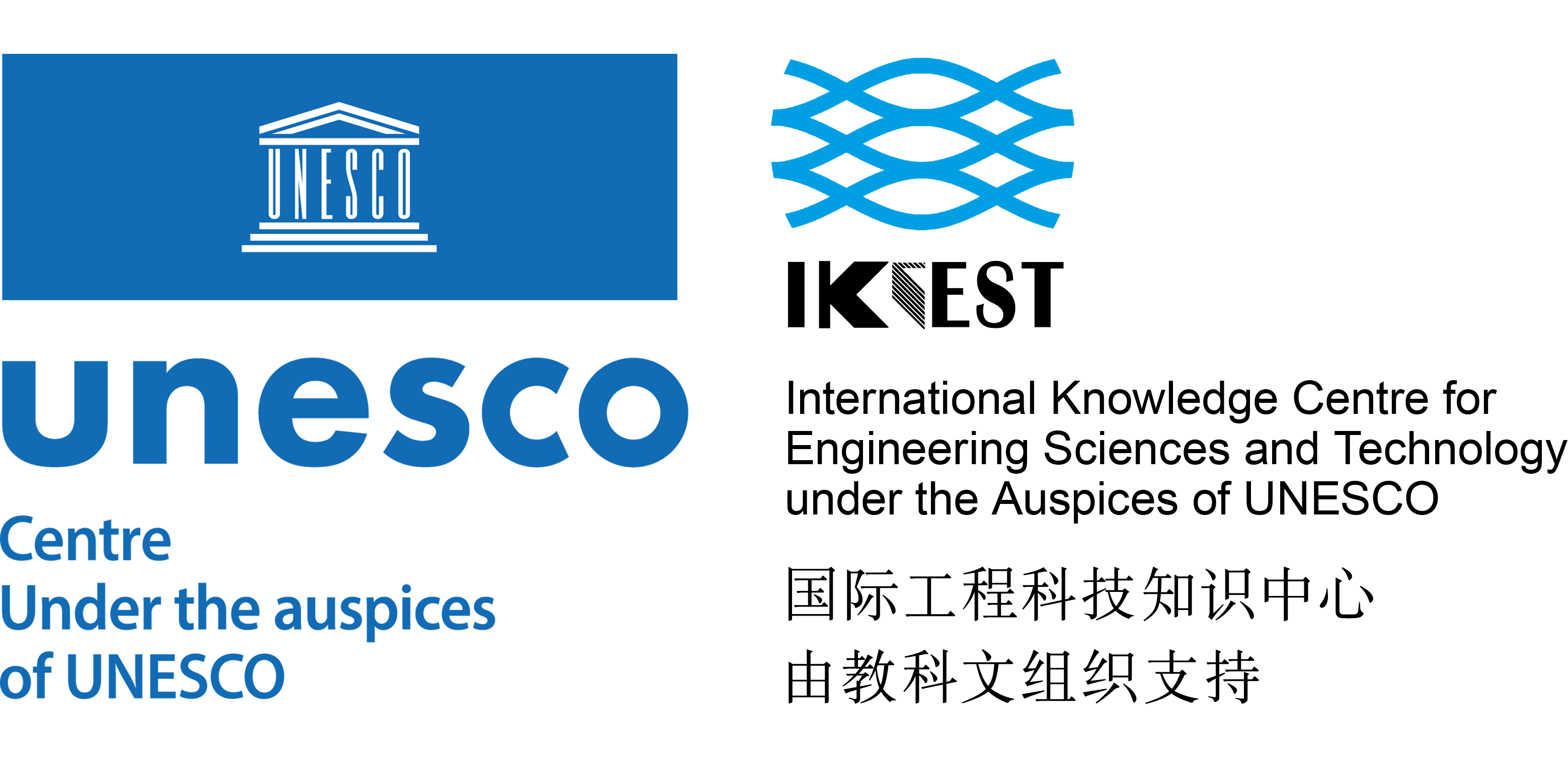Journal
Please choose volume & issue:
-
On the measurement of evolution of structural build-up of cement paste with time by static yield stress test vs. small amplitude oscillatory shear test
Abstracts:The structural build-up of cement-based materials is often characterized by the determination of the evolution of static yield stress with time. This property is crucial to many applications of concrete. However, the measurement of static yield stress may disturb the structure of cement-based material. As a consequence, the true structural build-up of the materials may not be detected. In this paper, the evolution of static yield stress and storage modulus (G′) determined by small amplitude oscillatory test was determined to characterize the evolution of the structural build-up of cement pastes. Results showed that G′ and static yield stress developed similarly with time. When the tests were carried out on the same sample, the measurement of static yield stress disturbed the structure of cement paste and had a significant effect on the following measurement of G′, but a slight effect on the following measurement of static yield stress.
-
Phase assemblage of composite cements
Abstracts:The phase assemblage of binary Portland cements with 45
wt% replacement by calcareous fly ash and slag has been investigated by experiment, mass balance and thermodynamic simulations. The input for these calculations was based on clinker reaction measured by XRD-Rietveld refinement, on SCM reaction measured by SEM-EDS full element mapping and on C-S-H composition by SEM-EDS point analyses. A sensitivity analysis estimates the uncertainty of determination of phase volume as at best ± 2 cm3/100 cm3, and thus of rather semi-quantitative character. The differences between experiment and calculations regarding AFt/AFm, C-S-H and portlandite were assessed. Gel/space ratios computed using the volumes of all hydrates showed a clear correlation to compressive strength, which was unaffected by the mix composition. This suggests that the type of hydrates formed has little or no influence on the compressive strength and that the key factor is the space filling. -
Structural evolution of synthetic alkali-activated CaO-MgO-Na2O-Al2O3-SiO2 materials is influenced by Mg content
Abstracts:Stoichiometrically controlled alkali-activated materials within the system CaO-MgO-Na
2 O-Al2 O3 -SiO2 are produced by alkali-activation of high-purity synthetic powders chemically comparable to the glass in ground granulated blast furnace slag, but without additional minor constituents. Mg content controls the formation of hydrotalcite-group and AFm-type phases, which in turn strongly affects C-(N)-A-S-H gel chemistry and nanostructure. Bulk Mg content and the Mg/Al ratio of hydrotalcite-group phases are strongly correlated. With sufficient Ca, increased bulk Mg promotes formation of low-Al C-(A)-S-H and portlandite, due to formation of hydrotalcite-group phases and a reduction in available Al. Hydrotalcite-group phase formation is linked to increased C-(N)-A-S-H gel polymerisation, decreased gel Al uptake and increased formation of the ‘third aluminate hydrate’. These findings highlight the importance of considering available chemical constituents rather than simply bulk composition, so that the desired binder structure for a particular application can be achieved. -
Supercritical drying of cementitious materials
Abstracts:Techniques to characterize the microstructure of hydrated cement require dried materials. However, the microstructure of hydrated products is significantly altered by high capillary forces during drying when using the conventional drying methods. To avoid drying stresses when preparing samples, we have employed supercritical drying (SCD) which has been used for decades to prepare aerogels that undergo no shrinkage during drying, but has rarely been used for cementitious materials. The pore solution is first replaced with isopropanol, and then with trifluoromethane (R23). The temperature and pressure are raised above the critical point, where no menisci or capillary pressure can exist; therefore, the dried samples are free of artifacts created by stresses. Images from scanning electron microscope show less compact morphology for supercritically dried samples than that dried by conventional methods, while BET surface areas of SCD samples are very close to samples dried by the isopropanol replacement method. This can be explained by the fact that isopropanol and supercritical fluid enter the micropores and block them. The nature of the chemical interactions of isopropanol and R23 with cement pastes are still not clear, but no reaction products were identified in the present study.
-
FTIR study on the polymorphic structure of tricalcium silicate
Abstracts:The infrared (IR) spectra of various tricalcium silicate (C
3 S) polymorphs were studied. The effects of variation in the polymorph and substituent ions on the IR spectra of C3 S were discerned by synthesizing samples with differing types and amounts of foreign ions but the same polymorphic form. The IR spectrum of C3 S mainly depends on the polymorphic form. Substituent ions have a weak influence. The IR spectra of T1 and T2 are very similar. Both show forbidden bands corresponding to symmetric vibration, indicating that [SiO4 ]4− tetrahedra are strongly distorted from an ideal tetrahedron. With an increase in the crystal symmetry of C 3 S, the number of bands for the polymorphs T1→ T2 → T3 → M1 → M3 → R decrease, and the peaks become broader. The absence of symmetric stretching bands with a sharp peak at approximately 812 cm− 1 indicates that the [SiO 4 ]4− tetrahedra retain an approximately regular tetrahedron symmetry in T3, M1, M3 and R C 3 S. -
An investigation into the colloidal stability of graphene oxide nano-layers in alite paste
Abstracts:Recent studies have reported that graphene oxide (GO) is capable of enhancing the mechanical properties of hardened Portland cement (PC) pastes. The mechanisms proposed so far to explain this strengthening generally assume that GO is well dispersed in the pore solution of PC paste, serving as a reinforcing agent or nucleation-growth site during hydration. This paper investigates (i) the effect of GO on the hydration of alite, the main constituent of PC cement, using isothermal calorimetry and boundary nucleation-growth modelling, and (ii) the factors controlling the colloidal stability of GO in alite paste environment. Results indicate that GO accelerates the hydration of alite only marginally, and that GO is susceptible to aggregation in alite paste. This instability is due to (i) a pH-dependent interaction between GO and calcium cations in the pore solution of alite paste, and (ii) a significant reduction of GO functional groups at high pH.
-
Durability and stability of an ettringite-based material for thermal energy storage at low temperature
Abstracts:Energy storage is necessary to increase the use of solar heat in buildings. Ettringite, a common hydrated phase found in cement-based materials, has the advantage of high energy storage density at low temperature (around 60
°C). The ettringite-based material was synthesized by hydration of calcium sulfoaluminate cement for heat storage. As durability is a key criterion for selecting a heat storage material, the aim of this paper is to assess the stability and durability of an ettringite matrix intended to be used for this purpose. Thermal stability, reversibility and carbonation tests were performed on the material produced. Its physicochemical stability over time was followed by XRD, TGA, SEM and IR. The dehydration and rehydration process in the ettringite-based material, leading to the heat charging and discharging process, was reversible during several cycles. An accelerated carbonation test with the material showed that its use as heat storage material requires protection against CO 2 . -
Novel understanding of calcium silicate hydrate from dilute hydration
Abstracts:The perspective of calcium silicate hydrate (C-S-H) is still confronting various debates due to its intrinsic complicated structure and properties after decades of studies. In this study, hydration at dilute suspension of w/s equaling to 10 was conducted for tricalcium silicate (C
3 S) to interpret long-term hydration process and investigate the formation, structure and properties of C-S-H. Based on results from XRD, IR, SEM, NMR and so forth, loose and dense clusters of C-S-H with analogous C/S ratio were obtained along with the corresponding chemical formulae proposed as Ca5 Si4 O13 ∙ 6.2H 2 O. Crystalline structure inside C-S-H was observed by TEM, which was allocated at the foil-like proportion as well as the edge of wrinkles of the product. The long-term hydration process of C3 S in dilute suspension could be sketchily described as migration of calcium hydroxide and in-situ growth of C-S-H with equilibrium silicon in aqueous solution relatively constant and calcium varied. -
Influence of fly ash on compressive strength and micro-characteristics of magnesium potassium phosphate cement mortars
Abstracts:Although the reactivity of fly ash (FA) in magnesium potassium phosphate cement (MKPC) systems is still unclear, it has been generally treated as an inert filler in the mix designs of FA/MKPC-based materials. In this study, FA was incorporated in MKPC mortars through two different design methods, where FA was either treated as inert or reactive. Fresh performance, compressive strength and micro-characteristics of the FA/MKPC mortars were systematically evaluated. The experimental results show that the design method where FA was treated as reactive can lead to better fresh performance, better optimized microstructure and higher mechanical strengths. The SEM analysis indicates some reaction of the FA particles within the MKPC mortars; however, the detailed compositions of the formed secondary reaction products could not be directly determined by either XRD or TGA analysis. Furthermore, this study underlines the importance of two ratios,
R Magnesia and: FA R KDP : (Magnesia + FA) -
Five year drying of high performance concretes: Effect of temperature and cement-type on shrinkage
Abstracts:This experimental study imposes limited relative humidity (
RH ) gradients to small mature concrete samples, at a constant temperatureT = 20, 50 or 80°C. Mass loss and shrinkage are recorded until stabilization at eachRH andT , for up to 1991days. Firstly, our mass loss data are consistent with those presented in former research (on different samples of the same batch). After presenting and analyzing shrinkage kinetics, experimental data are fitted with usual models for shrinkage prediction, at each temperature of 20, 50 and 80°C. An adequate match is obtained by combining capillarity (i.e. Vlahinic's model coupling poro-elastic constants and water saturation level) and desorption (Bangham's equation).
Hot Journals
- Risk Breakdown Matrix for Risk-Based Inspection of Transportation Infrastructure Projects
- Social Control in Outsourced Architectural and Engineering Design Consulting Projects: Behavioral Consequences and Motivational Mechanism
- 2022 Best Paper Award
- Hold-Ups and Failures in Negotiated Order: Unearthing the Nuances of Rework Causation in Construction
- Prevalence and Risk Factors for Poor Mental Health and Suicidal Ideation in the Nigerian Construction Industry
- CFRP–Cable-Stayed Bridge Hybrid with Partial Suspension and a Span Exceeding 3,000 m: Concept, Optimization, and Construction
- Impact of Wind Load Characteristics on Computed Bridge Stay-Cable Forces Used for Bridge Health Monitoring
- Weak-End and Frequency Detection of Elastically Supported Bridges by Contact Residual Response of Two-Axle Test Vehicle in a Round Trip
- Development of Performance-Based Fragility Curves of Coastal Bridges Subjected to Extreme Wave-Induced Loads
- An Analytical Model to Evaluate Short- and Long-Term Performances of Post-Tensioned Concrete Box-Girder Bridges Rehabilitated by an Ultrahigh-Performance Concrete Overlay
- Three-Dimensional Velocity Distribution in Straight Smooth Channels Modeled by Modified Log-Law
- Experimental Investigation on Flow Past Two and Three Side-by-Side Inclined Cylinders
- An Experimental Investigation of Rotor–Box Aerodynamic Interaction 1
- Modeling Gas–Liquid Flow Between Rotating and Nonrotating Annular Disks
- Entry Length Requirements for Two- and Three-Dimensional Laminar Couette–Poiseuille Flows
Advanced Materials (3,745)
- Structured Perovskite Light Absorbers for Efficient and Stable Photovoltaics
- Strategies for High‐Performance Solid‐State Triplet–Triplet‐Annihilation‐Based Photon Upconversion
- Atomic Engineering Catalyzed MnO2 Electrolysis Kinetics for a Hybrid Aqueous Battery with High Power and Energy Density
- Crystal Adaptronics: Global Performance Indices for Dynamic Crystals as Organic Thermal Actuators (Adv. Mater. 20/2020)
- Enlightening Materials with Photoswitches
Acta Astronautica (1,768)
- Mixed-integer trajectory optimization with no-fly zone constraints for a hypersonic vehicle
- Adaptive control design for active Pogo suppression of large strap-on liquid launch vehicles
- Machine learning based approach for modeling and forecasting of GPS–TEC during diverse solar phase periods
- Effect of two-dimensional micro-cavity surface on hypersonic boundary layer
- Investigation on burning behaviors of aluminum agglomerates in solid rocket motor with detailed combustion model








 User Center
User Center My Training Class
My Training Class Feedback
Feedback





